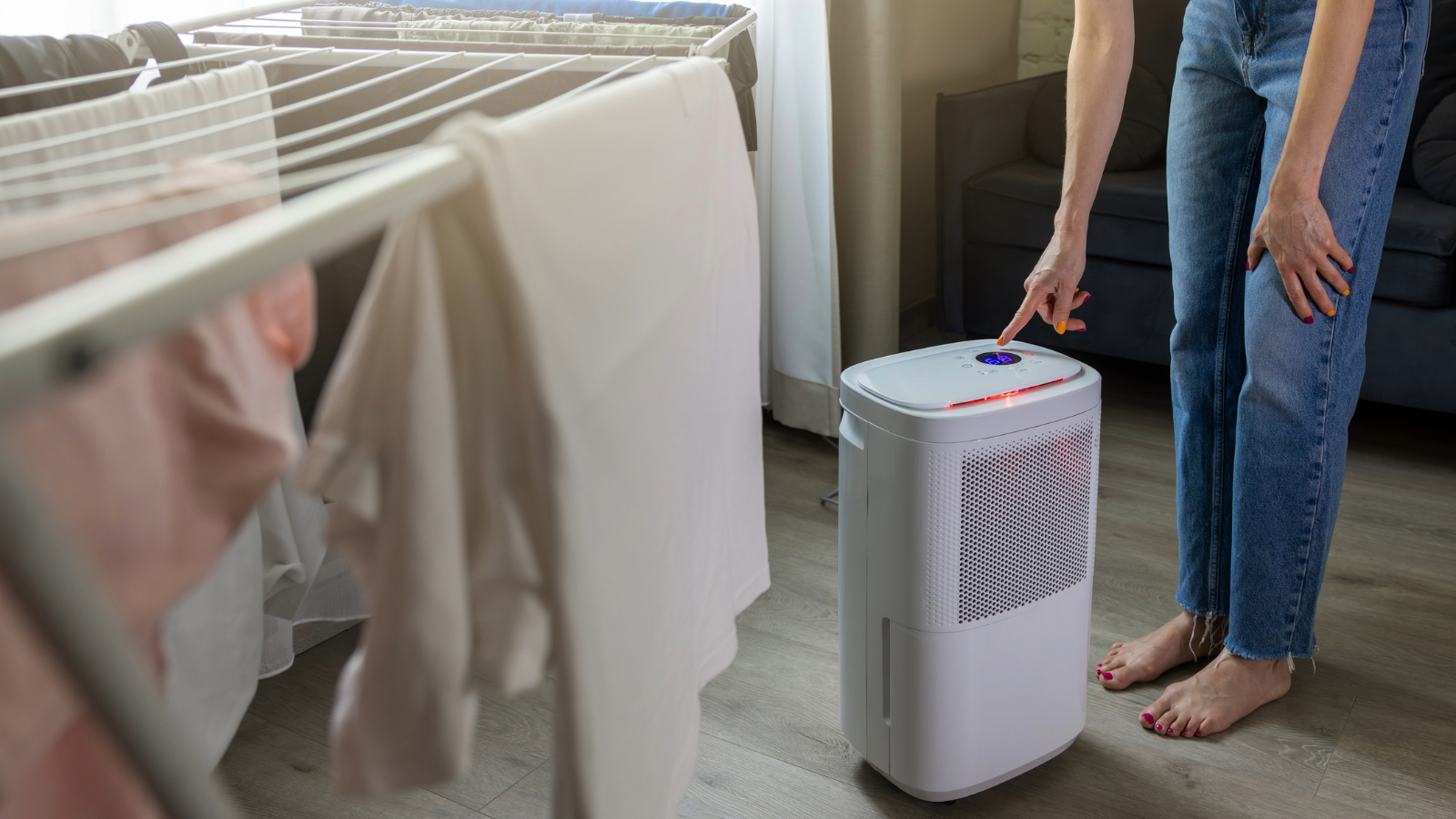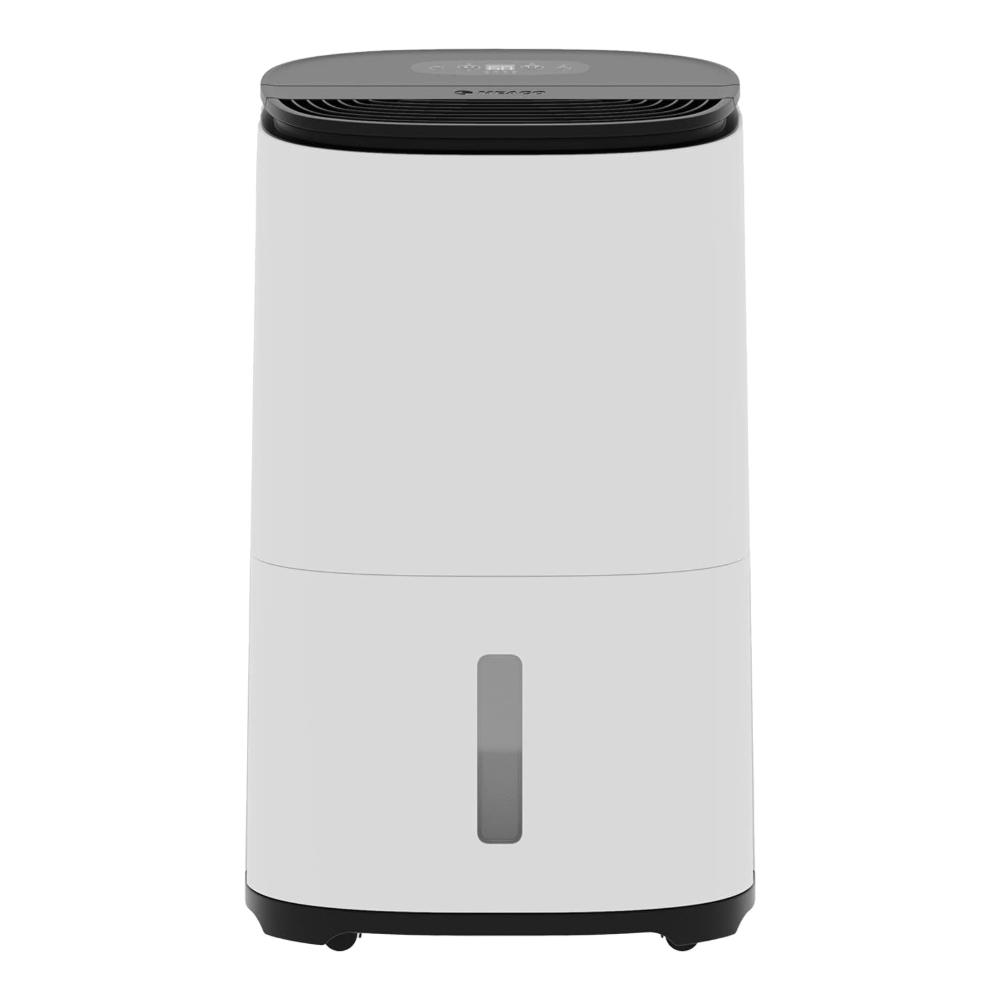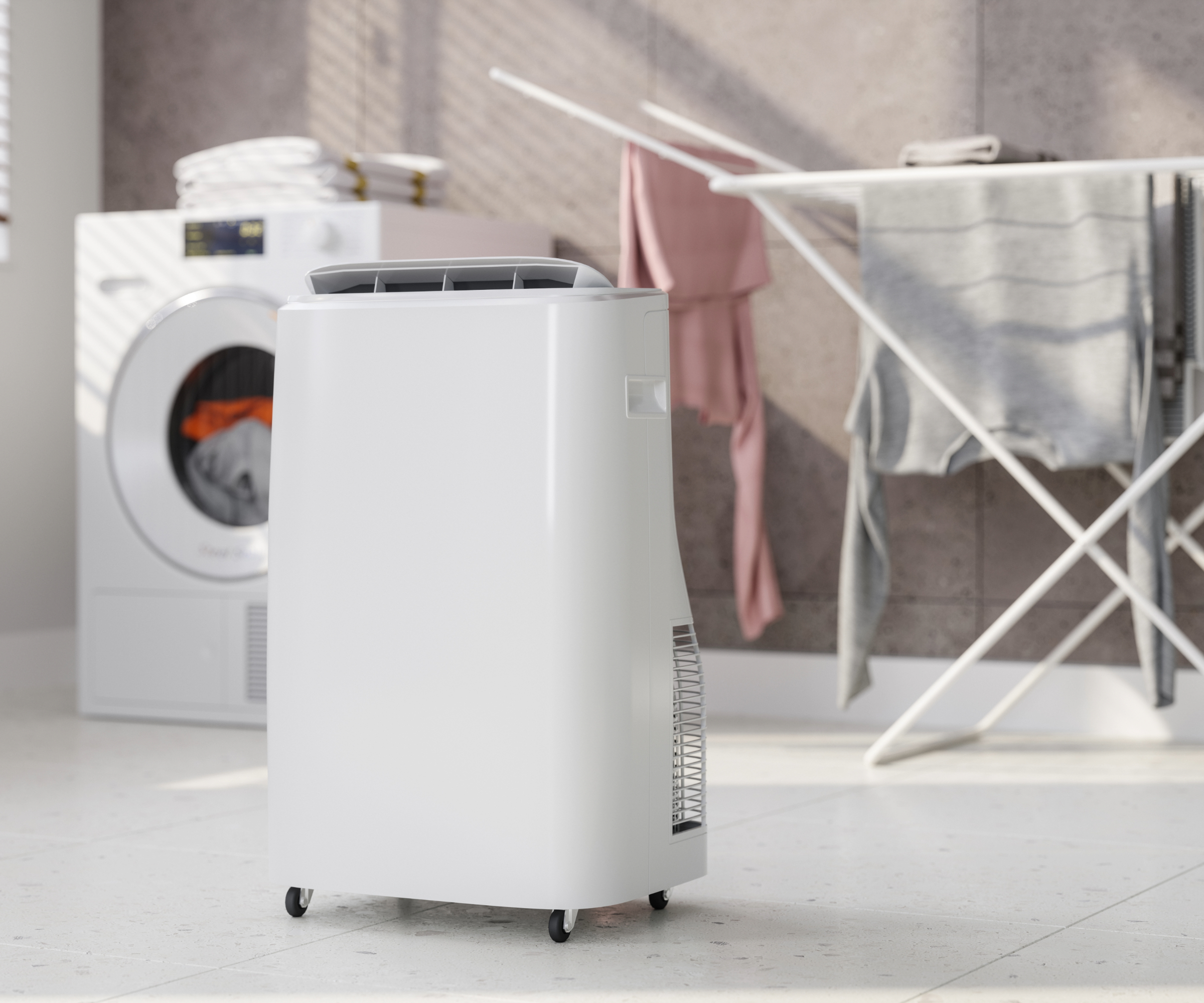Do dehumidifiers dry clothes? Yes, but there’s one thing you’ll need to keep in mind
Wondering whether dehumidifiers can dry clothes? Here’s how they can help reduce your household bills while offering other benefits

Do dehumidifiers dry clothes? This is a really common question these days, with energy costs and household bills at the forefront of many people's minds.
Now that our outdoor washing lines are being packed away for winter, the most obvious way to get clothes dry fast is to turn to our trusty tumble dryers – but handy though they are, they can also be notoriously energy hungry.
This has led to a rise in people looking for alternative ways to dry wet clothes – and given that dehumidifier running costs are relatively low, using these appliances is a method that many people are considering. So, can this type of appliance be used for this purpose or should they be reserved for keeping condensation and damp at bay?
Do dehumidifiers dry clothes?
We have some good news here – dehumidifiers are not just for dealing with window condensation, you can use a dehumidifier to dry clothes too. Even better, this can be far cheaper than using your tumble dryer.
That said, some dehumidifiers are more effective at drying clothes than others so it is important to check out the various functions of the models you are interested in before buying.
Laura Bradbury, Head of eCommerce at Vonhaus says, "It’s a gentler and more energy-efficient option that also helps reduce condensation and damp in your home.”

Featuring a dedicated smart laundry mode, this dehumidifier is an excellent choice for drying your clothes and will automatically switch off after six hours to save you money. It also doubles as an air purifier with a HEPA filter.

As Head of eCommerce at online homeware and garden retailer Vonhaus, Laura Bradbury is responsible for developing and growing the brand.
How do dehumidifiers dry clothes?
So, how do dehumidifiers dry clothes exactly? Viktor Velikov, Director at Elserve, explains, "As clothes dry, they release moisture, which the dehumidifier captures and condenses into liquid form. This process removes humidity from the space, speeding up drying while also helping to prevent damp and mould from developing."
Bring your dream home to life with expert advice, how to guides and design inspiration. Sign up for our newsletter and get two free tickets to a Homebuilding & Renovating Show near you.
You should look for a dehumidifier with a laundry mode or clothes drying mode. On these settings, a dehumidifier will filter out moisture and blow it back out, running on the highest fan speed and lowering the humidity to normal humidity levels.
In order to get the most out of the dehumidifier on this setting, it is wise to close the door of the room and place the unit close to where the clothes are hanging.


With more than 22 years of experience in the domestic appliance industry, Viktor Velikov is the director of Elserve. He leads a trusted team delivering efficient, reliable home appliance repairs across Greater London.
Is a dehumidifier cheaper to run than a tumble dryer?
In short, yes, dehumidifier running costs are less than those for tumble dryers. That said, they can take much longer to dry clothes.
When looking at dehumidifier running costs, you need to look at the model's power rating and how much you pay for electricity per kWh. From October 2025, the national average price of electricity is 26.35p per kWh, according to Ofgem.
Dehumidifiers are rated in Watts (W) – the higher the power, the more energy it uses. So, a model with a power consumption of 151 watts would cost 4p per hour to run – based on the calculation 0.151kWh x 26.35p = 4p per hour.
A model with a wattage of 400W would cost 10.5p per hour.
The cost of running a tumble dryer is usually calculated per cycle – and an average cycle tends to take around an hour. Vented and condenser tumble dryers cost around £1.70 - £1.80 per cycle (heat pump tumble dryers are far cheaper to run) which means that if you use yours twice a week, you will currently be facing bills of around £176 to £187 a year.
How long does a dehumidifier take to dry clothes?
It takes between four and six hours to dry laundry with a dehumidifier, according to Laura Bradbury. However, it will depend on the amount of laundry and the humidity levels in your home.

Pros and cons of using a dehumidifier to dry clothes
Pros:
- Reduced condensation: At the same time as drying your clothes, the moisture produced will be being dealt with by the dehumidifier.
- Additional heating: The heat produced by desiccant dehumidifiers can be used to warm up your home, meaning less reliance on other heating methods.
- Less risk of damp or mould: Wet clothes hanging around can result in damp patches on walls – something that a dehumidifier will prevent.
Cons:
- It takes a long time: While it is certainly much cheaper to use a dehumidifier to dry clothes than it is to run the tumble dryer, it will take longer to get the same results – perhaps up to five or more hours on average. Factor this when looking at running costs.
Where should you position a dehumidifier to dry clothes?
To achieve the best results, Laura Bradbury recommends placing your dehumidifier and laundry in an enclosed space, such as a spare bedroom or utility room. Make sure the device is a few feet away from the clothes, and keep your windows and doors closed. While it might seem like a logical position, you should never put your dehumidifier in the bathroom.
If you don’t mind waiting a little longer for your clothes to dry, switching to the best dehumidifier can be a great way to save money – especially since they offer so many other benefits at the same time.
Still unsure about making the switch? We’ve compared the pros and cons of using a dehumidifier vs a tumble dryer to help you choose the right option for your home.
Natasha was Homebuilding & Renovating’s Associate Content Editor and was a member of the Homebuilding team for over two decades. In her role on Homebuilding & Renovating she imparted her knowledge on a wide range of renovation topics, from window condensation to renovating bathrooms, to removing walls and adding an extension. She continues to write for Homebuilding on these topics, and more. An experienced journalist and renovation expert, she also writes for a number of other homes titles, including Homes & Gardens and Ideal Homes. Over the years Natasha has renovated and carried out a side extension to a Victorian terrace. She is currently living in the rural Edwardian cottage she renovated and extended on a largely DIY basis, living on site for the duration of the project.
- Megan MilsteadContent Editor

